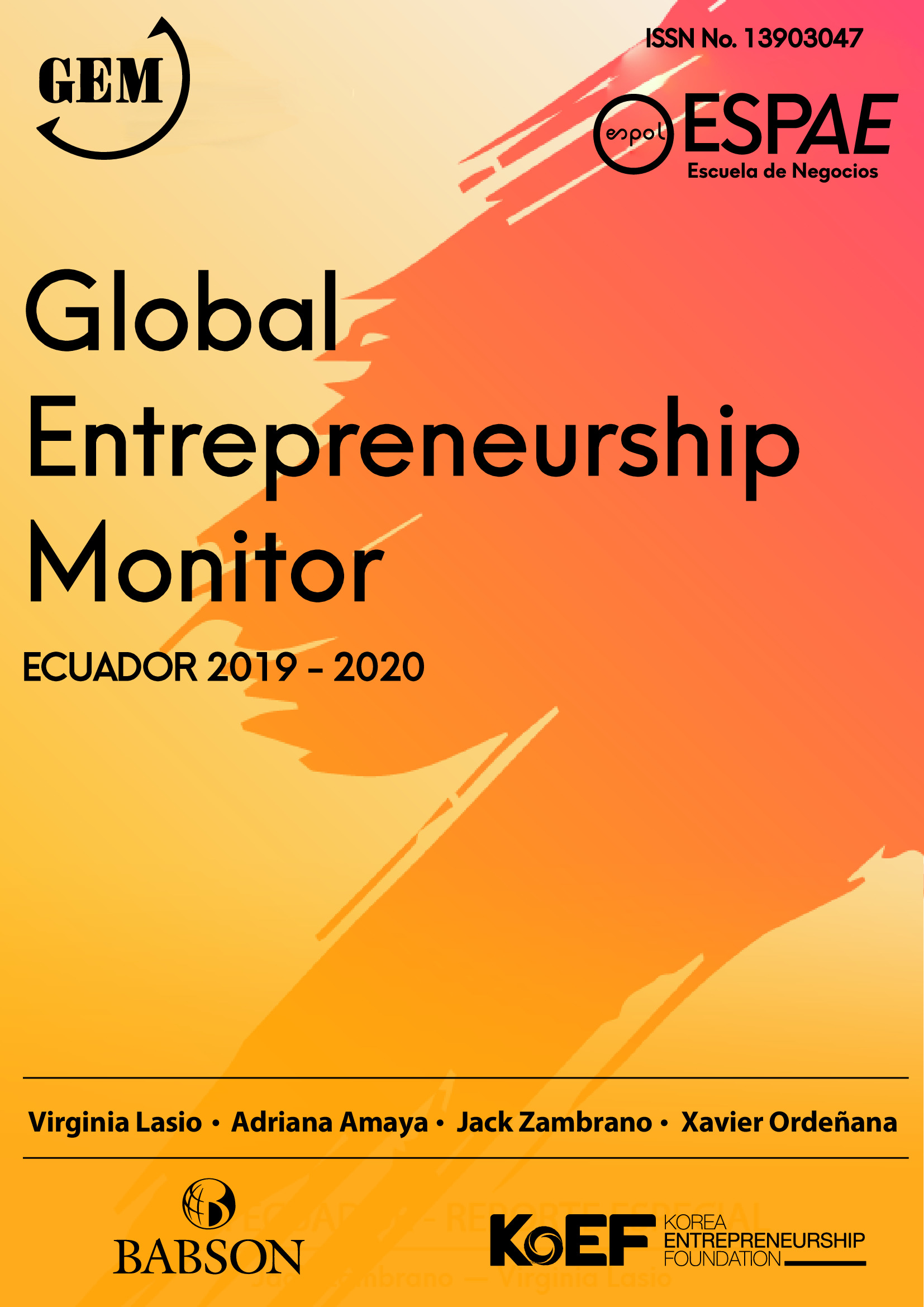GEM Ecuador 2019/2020 Report

- Year of publication: 2020
- Category: National Reports
- Language: Spanish
- Upload date: 2020-08-06
In 2019, Ecuador’s TEA rate was 36.2% of the adult population, a significant increase since the last measurement, breaking a four-year downward trend. This change is almost exclusively due to the proportion of nascent entrepreneurs, which has increased by 5.7 percentage points since 2017; the proportion of new entrepreneurs has also increased, but only by 1 point. It is a recurring pattern, many businesses in the gestation and start-up stage and few consolidated. In this report we take a deeper look into these entrepreneurs’ characteristics using data from the Adult Population Survey (APS). This report’s APS presents changes in the methodology that allow for a deeper understanding of entrepreneurial motivations and aspirations. The environmental conditions that favor or hinder entrepreneurship have not substantially changed, moreover, some of the framework conditions for entrepreneurship, measured through the National Expert Survey, NES, have deteriorated. In the recently created NECI, the National Entrepreneurship Context Index, Ecuador is ranked 39th out of 54 countries, showing an unfavorable context for entrepreneurship. During the past year, the reduction in adequate employment, the increase in unemployment and underemployment, justify to some degree the results obtained. As in previous years, this report is based on the data collected in the first half of 2019, meaning that the results describe a reality that no longer exists in 2020, in the midst of a global pandemic. However, we consider that the information of the GEM Ecuador 2019/2020 has not lost its value, it will become the reference level to assess the changes that will arise from the current context. Even understanding this, we wanted to explore the degree of affectation and the nature of the changes; For this purpose, we have turned to various entrepreneurial support organizations in the country, such as AEI, EPICO, BuenTrip Hub, I3Lab, AJE, among others, whom we thank for giving us their vision of the strengths and opportunities in the current environment, as well as the weaknesses and threats faced by entrepreneurs and the local ecosystem. These organizations have also allowed us to access a group of 150 entrepreneurs nationwide and learn about their situation. We include this information in our report as a complement to the information that the GEM updates every year.
